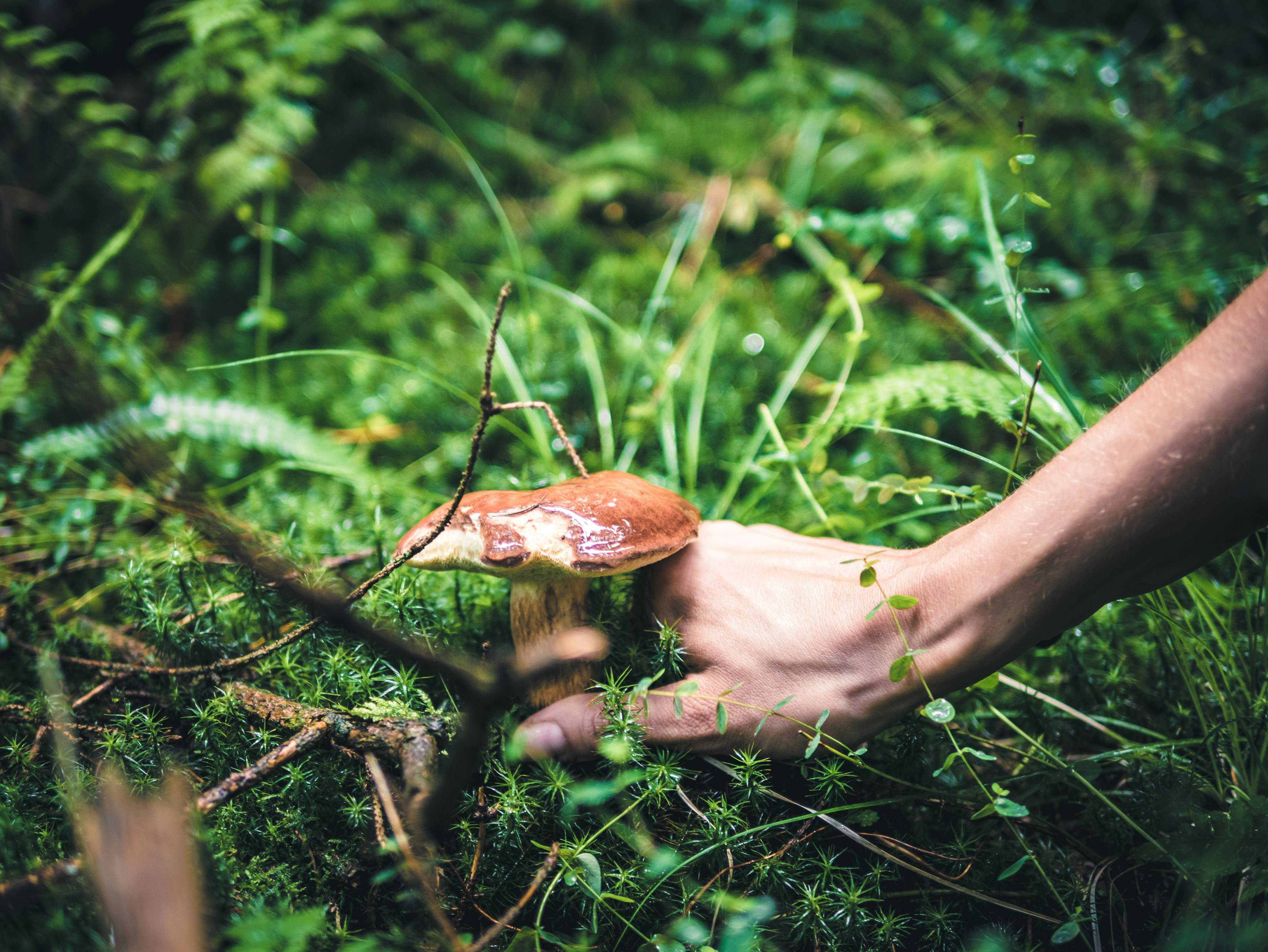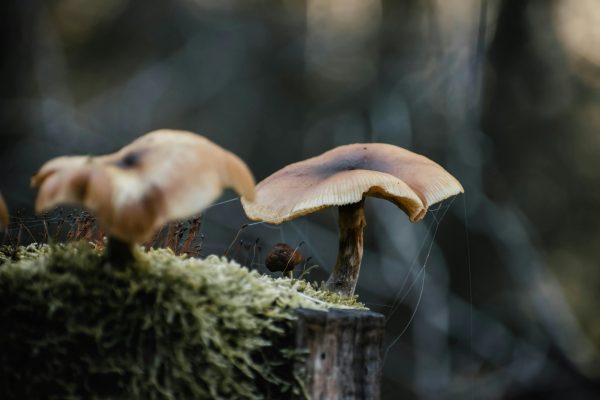Key Takeaways
- If you’re new to foraging, you should always go with an expert—especially if you’re looking for psychedelic mushrooms.
- There are psilocybin mushroom species all over the nation, with each region having its own unique species to look for.
- Magic mushrooms are illegal to pick, but their spores are legal to take home and study outside of California, Idaho, and Georgia.
Mushroom hunting is one of humanity’s oldest traditions, spanning thousands of years before recorded history. Hunter-gatherer communities used—and still use—mushrooms for everything from cooking to medicine to spiritual practices.
Even with the abundance of mushrooms at supermarkets and farmers markets, people still practice this ancient art in the US for the same reasons. Many go foraging for local culinary mushroom species that aren’t available in most grocery stores. Others are looking for unique fungi with medicinal properties, such as lion’s mane mushrooms. And for a few knowledgeable mycologists, the targets of their mushroom foraging are mushrooms of the psychedelic variety.
But if you’ve never done it before, it can seem pretty overwhelming, especially if you’re looking for magic mushroom species like Psilocybe cubensis. There are lots of fungi that are genuinely dangerous to eat, but look deceptively like the fungi you’re actually foraging for. Here’s our beginner’s guide to getting started with mushroom hunting in the US!
The Fundamentals of Mushroom Foraging
No matter what mushrooms you’re after or the area you’re foraging in, there are a few tips every new forager should know:
1. Go with an experienced forager
Especially if it’s your first few times, you should go out mushroom foraging with someone who has experience looking for the species you’re after. It’s the easiest way to know for sure you’re actually finding the right mushrooms, not just ones that look like it. If you don’t have any friends that forage, you can find experienced foragers in local groups.
2. Carry a field guide
Even if you are going out with a veteran forager, you should carry a field guide with you, especially one for the local region you’re in. These guides will have detailed descriptions of mushroom appearances, ideal growing environments, and (if it isn’t a toxic or psychedelic mushroom species) harvesting techniques. When you find a mushroom, you can check your field guide to ensure it’s the species you’re looking for!
3. Bring the right gear
If you’re just hunting mushrooms to observe them in their natural habitat, such as magic mushroom species, you only need a field guide. If you’re foraging for mushrooms you want to cook with, you may want a small knife and a bag made of bare or waxed paper (plastic traps moisture, causing mold).
4. Never eat unidentified wild mushrooms
If you’re looking for psilocybin-containing mushrooms, you should never eat them. But if you’re looking for a species that is edible, you should only eat it if an expert forager has 100% confirmed it is the species you think it is. Otherwise, you can accidentally poison yourself, an experience that is unpleasant at best and life-threatening at worst.
5. Don’t forage on private land without permission
Only go mushroom foraging on public land. Foraging on private land you haven’t been given explicit permission to access has another name: trespassing!
Where to Look For Magic Mushrooms
There are numerous regions across the United States where psychedelic mushroom species grow. We’ll go into some of the most notable species that grow in each one, but we encourage you to double-check your local area before going mushroom hunting. Just because a mushroom grows in your region doesn’t mean it grows near you, and just because we only mention a few species doesn’t mean there aren’t more. Panaeolus cinctulus and psilocybe cubensis, for example, are two types of mushrooms that grow just about all over the country.
Pacific Northwest
With a moist climate and huge tracts of untouched conifer forests, Washington, Oregon, and Northern California are the perfect environments for mushroom foraging. Two major species fruit in fall here:
Psilocybe azurescens: Known as the “flying saucer” mushroom due to its UFO-shaped cap. You can find it growing in coastal dune grasses, out of sandy soil, and among woodchips.
Psilocybe cyanescens: Among the most potent of all Psilocybe species, these grow in mulch and wood chips. Distinguished by its unique wavy cap.
Southwest
Due to its arid climate, there aren’t many mushrooms to forage in the American Southwest. There are two that stand out:
Psilocybe cubensis: The most popular Psilocybe species in the world. It often grows out of cow patties on ranches in Texas.
Panaeolus cyanescens: This is different from Psilocybe cyanescens, instead growing small, bendy stalks with round caps. These potent and rare mushrooms can grow in Arizona during the rainy season.
Northeast and Appalachia
If you’re hunting mushrooms in Northeast America, you’re spoiled for choice. There are two famous mushrooms (among many) that are native to this region:
Psilocybe ovoideocystidiata: These mushrooms grow in both woody debris and at the edges of rivers, earning it its name “river teacher.”
Psilocybe caerulipes: Known as blue-footed mushrooms or just “blue-foot,” these grow in small patches (occasionally even solo) in wood debris, rotting plants, and decaying logs.
Southern States
Every Southerner will tell you how hot and humid it can get throughout the year. While that’s not pleasant to live in, it’s a paradise for mushrooms—and, by extension, mushroom foragers. Among the hundreds of mushroom species (both psychoactive and not), two stand out in the South:
Psilocybe aztecorum: Distinguished by blue-ish bruising, you can find this species growing in ravines.
Psilocybe caerulipes: Blue-foot stretches all along the east coast, from the Appalachian Mountains down to Florida.
Study Mushroom Spores at Home
Foraging mushrooms in the wild is a rewarding, educational, and grounding experience. However, you can’t take psychedelic mushrooms home with you—but besides California, Idaho, and Georgia, their spores are a different story. Eden Shrooms helps our fellow mycologists and mushroom lovers find magic mushroom spores from a variety of psychedelic species. So between your trips hunting mushrooms in the forest, you can get a mushroom spore syringe or mushroom spore swab to study their spores at home. Buy mushroom spores today at Eden Shrooms!


